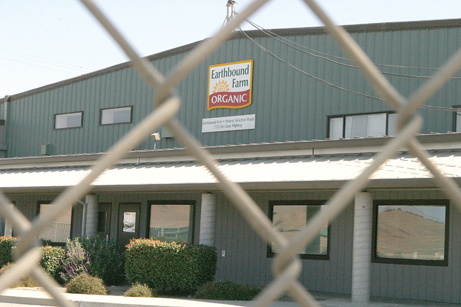Ensuring produce is free from contamination from wild animals
and livestock is challenging
By JULIANA BARBASSA, Associated Press Writer
SAN FRANCISCO (AP)
– California farmers facing national scrutiny after an E. coli
outbreak caused by tainted spinach are grappling with how to
increase food safety in the face of hard-to-control risks like
water quality and animal contact.
Federal officials have set greater food-safety assurances as a
prerequisite for lifting the consumer warning on fresh spinach, and
growers and processors are drafting new measures to guard the crop
against future outbreaks.
Ensuring produce is free from contamination from wild animals and livestock is challenging
By JULIANA BARBASSA, Associated Press Writer
SAN FRANCISCO (AP) – California farmers facing national scrutiny after an E. coli outbreak caused by tainted spinach are grappling with how to increase food safety in the face of hard-to-control risks like water quality and animal contact.
Federal officials have set greater food-safety assurances as a prerequisite for lifting the consumer warning on fresh spinach, and growers and processors are drafting new measures to guard the crop against future outbreaks.
Efforts to pinpoint a source of the contaminated spinach have centered on San Benito County and the Salinas Valley. With tens of thousands of acres of leafy greens to police, a poor recent track record of bacterial contamination, and the produce passing through countless hands on its way to market, it’s difficult for farmers to guarantee safety, experts said.
“If we ask a farmer to start testing every drop of water that comes onto their farm, then forget it, you may as well have just told that farmer to shut down,” said Manuel Cunha Jr., a citrus grower in Fresno County. “We can only do so much.”
Difficult as it is to monitor factors like the cleanliness of irrigation water, worker hygiene or contamination by cattle and wild animals, it is more essential than ever, with produce being shipped farther and faster, multiplying the consequences of a local problem.
“It’s extremely difficult,” said Michael Villaneva, government liaison for the Western Institute for Food Safety and Security. “Take irrigation water, which is an open source, and can be exposed to all sorts of outside sources of contamination. Reservoirs, aqueducts, wells are open … you can’t monitor them all the time.”
Controlling the situation from a regulatory standpoint is complicated by the myriad agencies whose jurisdictions overlap in this area, said Jean Halloran, director of food policy initiative for Consumers Union, publisher of Consumer Reports.
The Food and Drug Administration oversees the safety of leafy greens, the U.S. Department of Agriculture looks after cattle processing, and the Environmental Protection Agency is in charge of water runoff from farms.
Add to that state regulatory agencies and standards developed by commodity groups that try to address concerns particular to a crop, and you have a tangled web of responsibilities, Halloran said.
“Regulations are developed and enforced completely differently,” she said. “We don’t have a good way to address this.”
The solution could come from taking crop-specific regulations developed by scientists, farmers and processors familiar with the food chain’s risks and make them mandatory across the industry, Villaneva said.
“We have to take the best science that’s out there right now and apply it across the board, with third party verification,” he said.
Some of the measures are straightforward, and well-known to many farmers, he said. They include hand washing, sanitizing equipment used in the field before its put away for the night, testing the water used to wash the vegetables to make sure there’s enough chlorine.
“We have operations that go way beyond the call of duty,” Cunha said.
Associated Press reporter Olivia Munoz in Fresno contributed to this report.










